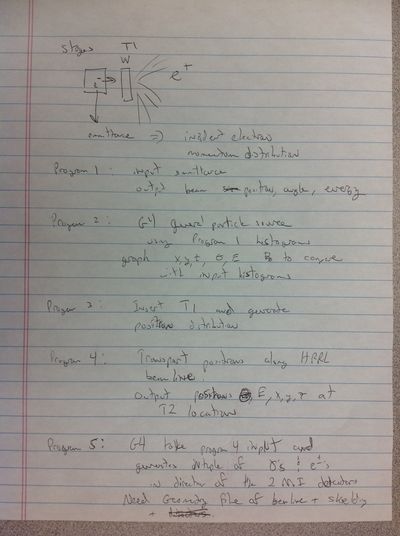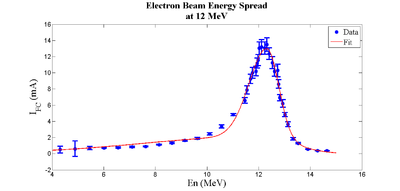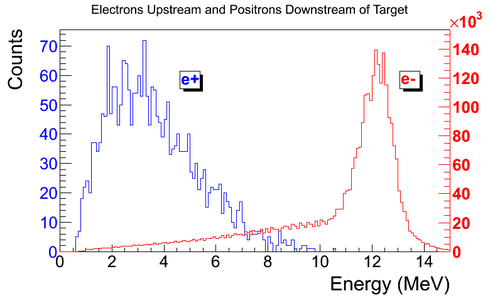July2012PosSimulation
2 MeV Positrons
Measured Electron energy distribution at 10 MeV on 1.mm target
Simulation steps
1.) GEANT4 Simulated Beam energy distribution
2.) GEANT4 Simulated Positrons emitted from 1.x mm thick target
3.) Now use above Positron distribution as the particle source for G4beamline
Positrons hitting Tungsten Converter target
4.) Use GEANT4 to determine 511s from the positrons distribution impinging converter target
Oct 16th 2012 BenchMark
stages:
1. Program to input emittance, output beamsize, beam, divergence and beam energy.
2. e- on W, outcome e+. Incident electron distribution on T1. with general particle source with step 1 histogram. check graph x, y, z theta, En_dis out_put is the input. (directory for each).
3. insert T1 and generate positron distribution.
4. Acceleractor code to transport positron along the beamline. Out put positron theta, beamsize (x,y), energy distribution, out puts transported positron.
5. Geant4 takes step 4 output generates gamma (and other e+,e-) and look at those goes to detectors. beamline, plus shielding, and detectors.
Simulations
Partical Data Ground ID: PDGid=11 is electron. PDGid=-11 is positron. PDGid=22 is photon.
Parameters
Dipole vacuum chamber width is mm
The cavity exit diameter is about 7.3 mm.
Energy Spread Two Skewed Gaussian Fit
Energy spread fitted with two skewed Gaussian.
Beam Distributions Beyond RMS: Media:Beam_Distributions_Beyond_RMS.pdf
Amplitude = 2.13894, mean = 12.07181, sigma_L = 4.46986, sigma_R = 1.20046
Sigma = 2.83516, Es = -0.57658
rms = 2.56472, skew = -0.94853
Amplitude2 = 10.88318, mean2 = 12.32332, sigma_L2 = 0.69709, sigma_R2 = 0.45170
Sigma2 = 0.57440, Es2 = -0.21360
rms2 = 0.56719, skew2 = -0.34231
Electron Distribution Upstream and Positron Distribution Downstream of Target1
simulation: Electron Distribution Upstream and Positron Distribution Downstream of Target1
3067274 Electrons fired.


